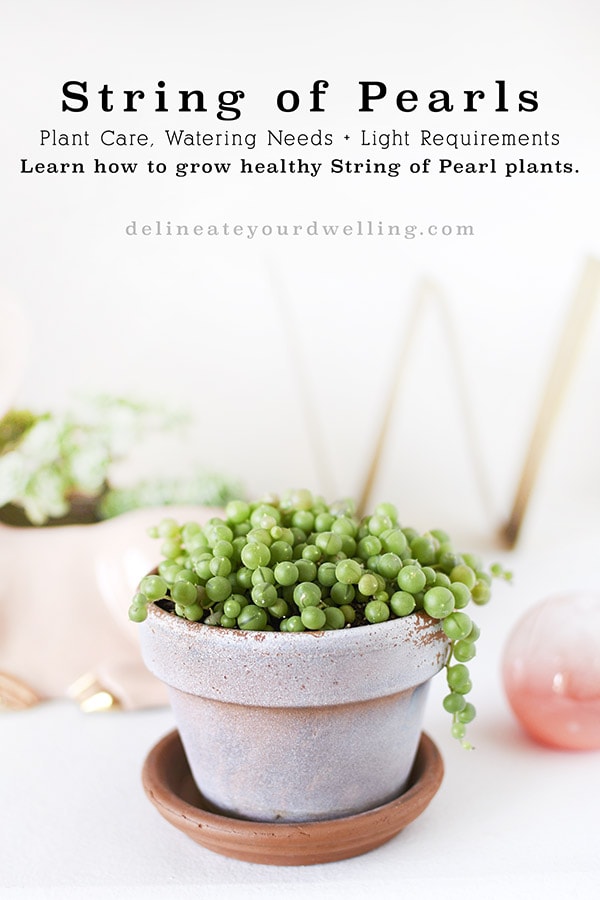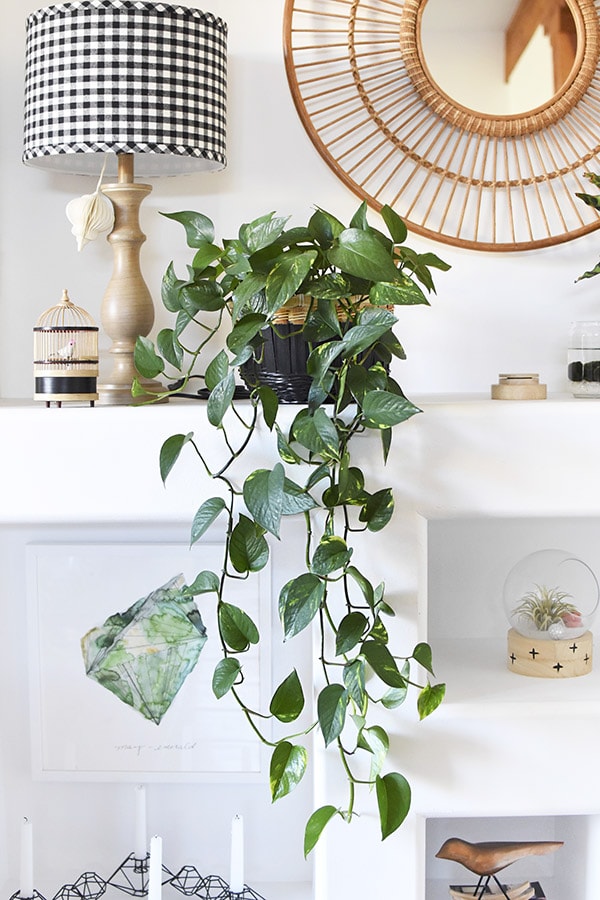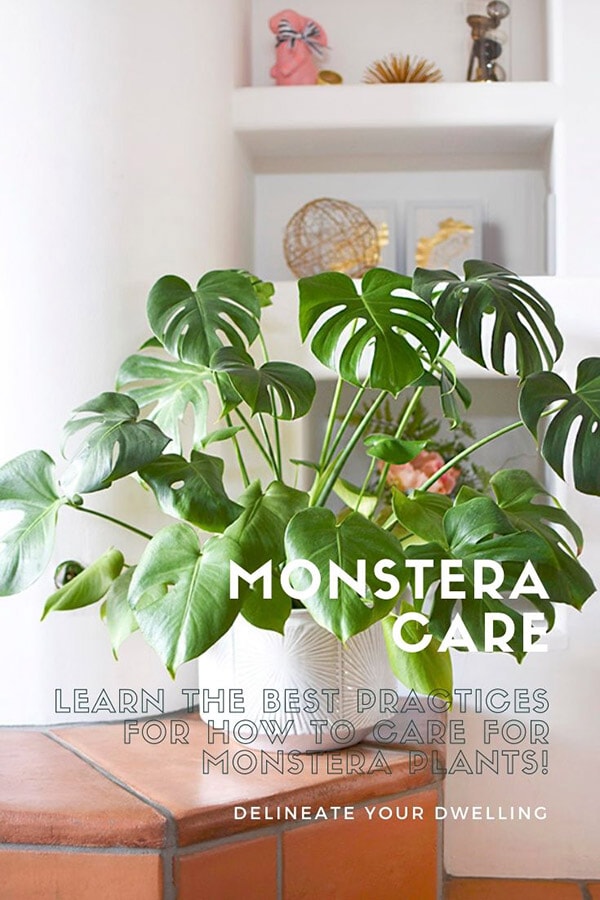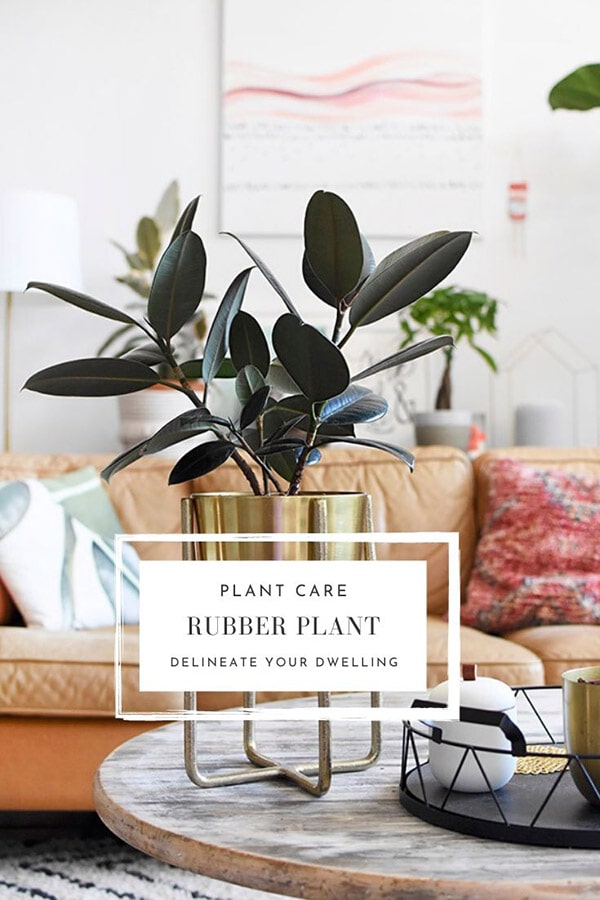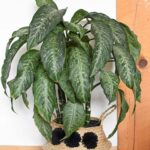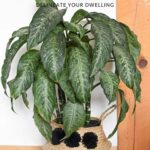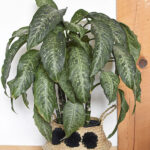Dumb Cane Plant Care tips
INSIDE : Learn some of the best Dumb Cane Plant Care tips to grow big, healthy plants! From the best water amounts to it’s lighting levels, this plant is a great more shading loving plant and a great indoor plant option.
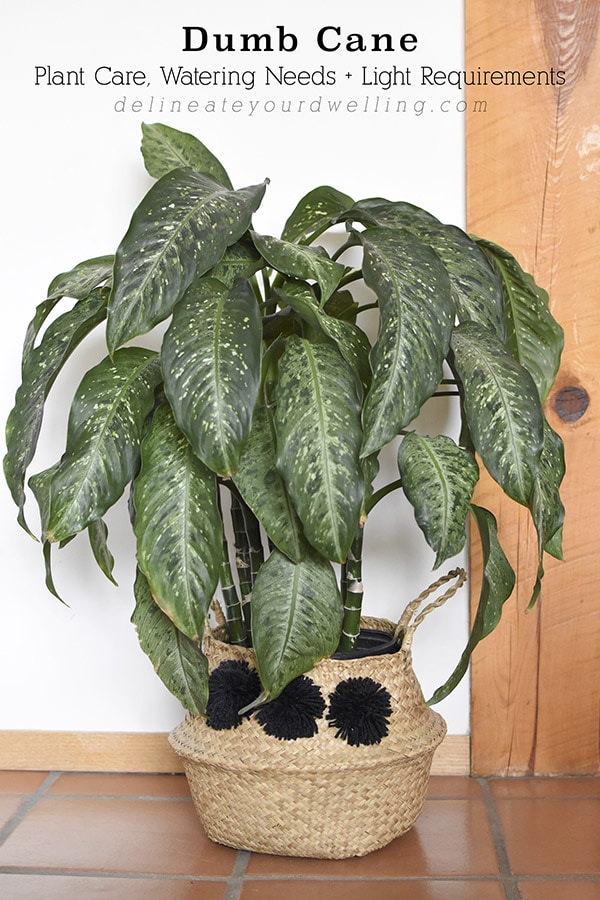
This post may contain affiliate links. See full disclosure here.
We moved from the lush green Midwest back to the desert a few years ago. Our home was covered in dull moving boxes, our walls were all dull creamy yellow/tan and our backyard was basically dirt. My green loving self needed something to lighten our home, so off to the local plant nursery I went. I came home with this lovely Dumb Cane plant and after almost three years, he is still doing amazing!
The Dieffenbachia plant, it’s latin name is pronounced (deef-en-BOK-ee-uh) really makes an excellent houseplant. In general they are quite tolerant of shade which makes them a good plant to start with. Be sure to check out my 11 Hard to Kill Plants post, too!
What are the best growing conditions for Dumb Cane?
I had my Dumb Cane right beside a bright window and he was happy. He grew, but each week as watering day came closer, his leaves would be wilted, he was so thirsty. I just assumed he wasn’t quite a desert lover. And then after doing some room rearranging, I moved him much further away from the window and I was shocked at my dumb cane’s response.
My plant went from pretty happy to just thrilled! No longer does his leaves wilt each week. It’s amazing to me that although typically they like to be near to bright light, sometimes you just need to play around with their exact location.
In general as a houseplant, dumb cane is a fairly low maintenance plant. However, don’t place them in a drafty spot or in a place that experiences wide fluctuations in temperature.
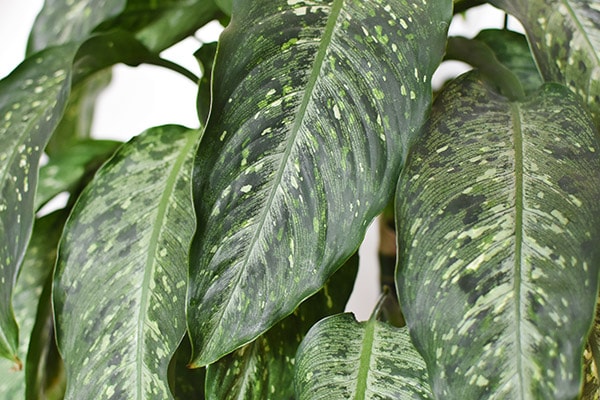
How often should I water Dumb Cane plants?
During the growing season, which are the warmer sunnier months, they like regular moisture and do not want to dry out. A large dieffenbachia might need to be watered twice a week and in the winter, you can water a little bit less.
I always think it’s smart to pick a watering day and check in on your plants each week on that day. Your plants may not even need a drink that day, but it’s a good habit to get into.
Stick your finger into the soil about a knuckle deep. If the soil feels dry, then you can go ahead and water your plant. If the soil feels damp or wet, it’s best to wait on watering.
Love plants like me? You might like some of my other Plant Care + Tip posts.
Looking to gain more plant insights, tips and methods for not only keeping your plants alive, but to have them THRIVE? Let’s getting growing some green enthusiasts, one plant owner at a time with my Happy Houseplants eBook!
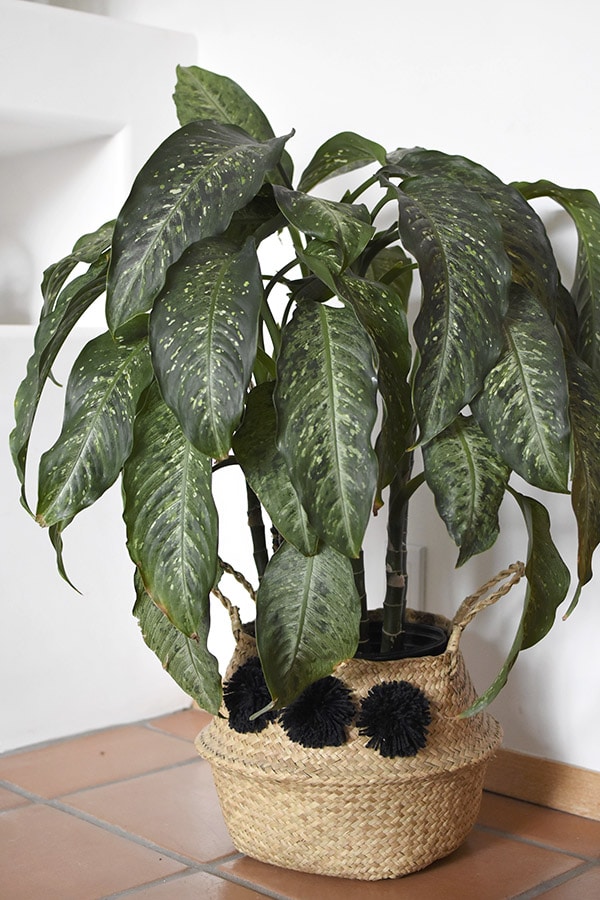
When the weather is warmer, I love taking my dumb cane outdoors every few weeks. I use the hose to rinse off it’s leaves from dust and give it a nice heavy drink then. Wait until the water runs out from the bottom of your grow pot and then allow the excess water to drain out before moving him back indoors.
What kind of light does Dumb Cane need?
They like bright light during the winter months. However, during the warmer seasons dumb cane prefers dappled shade or indirect light.

Filtered light is particularly important in the spring and summer, when the dieffenbachia houseplant is producing new, tender leaves that are subject to sunburn if the light is too bright or shines directly on the plant.
You should check out my post about the Best Sunlight Levels for Indoor Houseplants.
What supplies do I need to grow Dumb Cane?
Plant Moisture Meter | Pruning Shears | Dumb Cane plant | Spray Water Bottle
Why is dieffenbachia called dumb cane?
The name of dumb cane comes from the plant’s milky sap. The sap can be a mild irritant and should be kept from bare skin. If being exposed to the sap, be sure to wear gloves and avoid contact with your mouth, as you can risk temporary loss of speech (hence the name).
After owning this plant for 3+ years and even removing the occasional leaf, I have never seen on been exposed to the sap. So, just take caution with this plant but it is possible to still enjoy without worry.
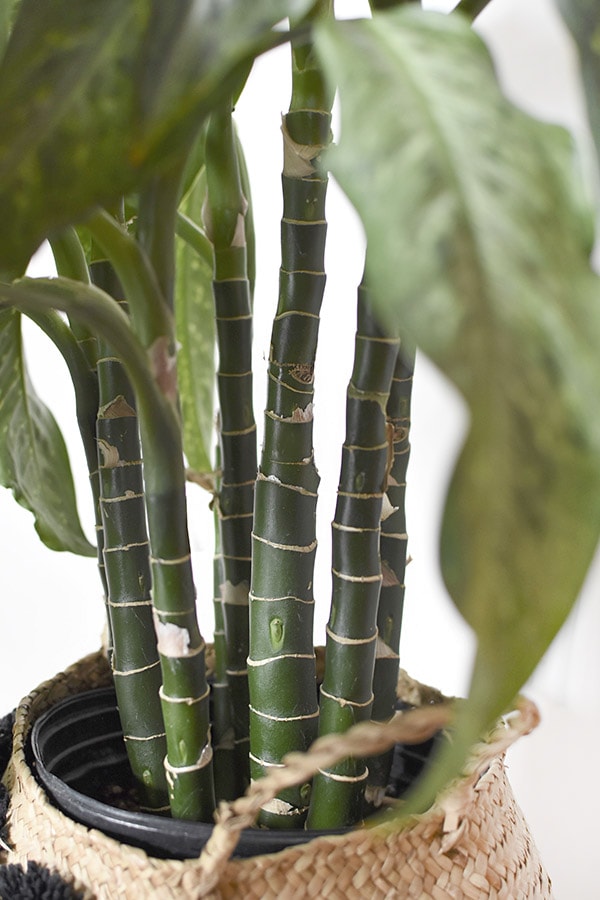
Is Dumb Cane poisonous to children and pets?
Contact with dumb cane (mostly from chewing) can cause numerous unpleasant symptoms, like mouth irritation, intense numbing, excessive drooling, and localized swelling. Typically, these effects are rarely life-threatening.
In most cases, the symptoms are mild and can be relieved with antihistamines. However, please use caution when placing these plants in your home. Call your doctor if your child or pet does chew or ingest the leaves.
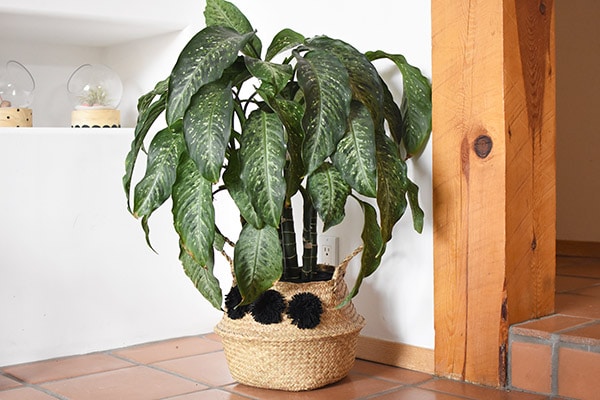
Why are the leaves on my dumb cane turning yellow?
Often times yellow leaves on a plant can mean a few different things. After some close examination, you should be able to narrow down the cause.
The leaves on a dumb cane plant can turn yellow for a number of reasons:
1. The plant is near a cold draft or an AC vent.
– Move your plant a little bit further away from the cold draft.
2. The bottom leaves are not getting enough light.
– It is the typical plant cycle to lose lower leaves as they are growing new leaves. These yellowing leaves at the bottom are okay to remove.
3. The soil has gotten too dry.
– Evaluate when is your watering day and give your plant a drink.
4. The plant is over watered and is dying.
– If the soil is wet to the touch and there are more yellow leaves each day, remove the plant from it’s pot and check on it’s roots. Are the roots mushy? It may have root rot. If your plant does have root rot, it is recommended to cut away any mushy rotten roots and repot your plant with fresh soil.
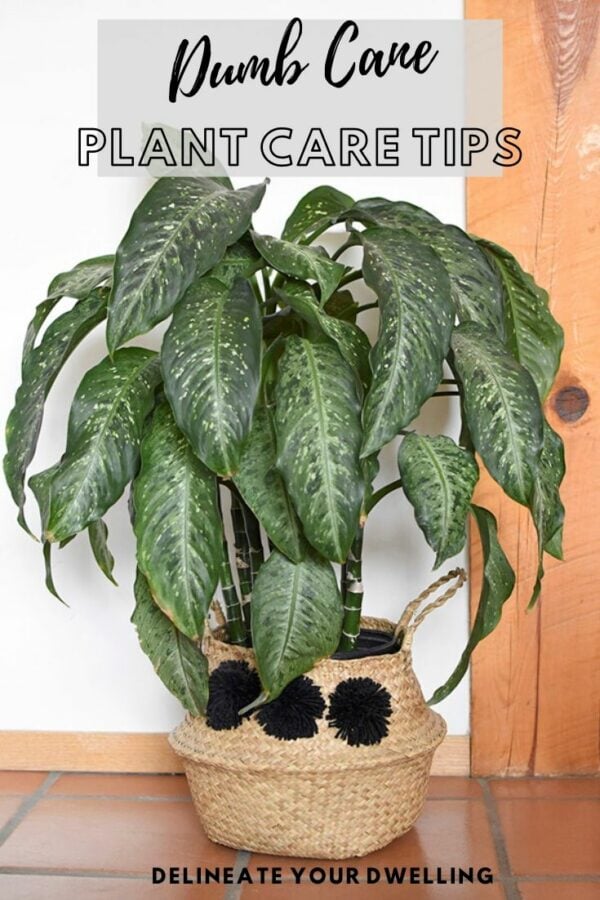
Can a dieffenbachia plant go outside?
Yes, dumb cane plants may live outside. However, since they typically are a more indirect light to shade loving plant, be aware of the amount of natural sunlight they receive. It would be most recommended to keep your plant in most shade in an outdoor setting.
Looking for more creative plant related posts? You might want to check these out!
